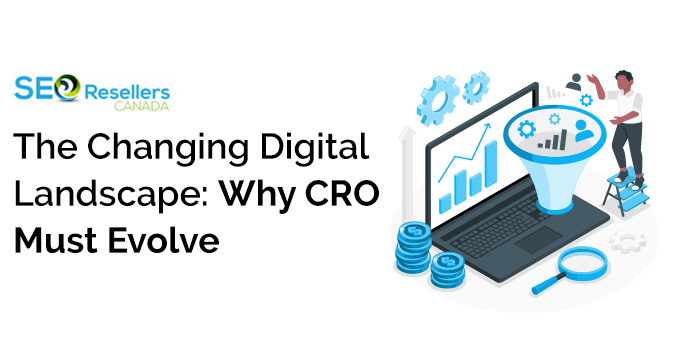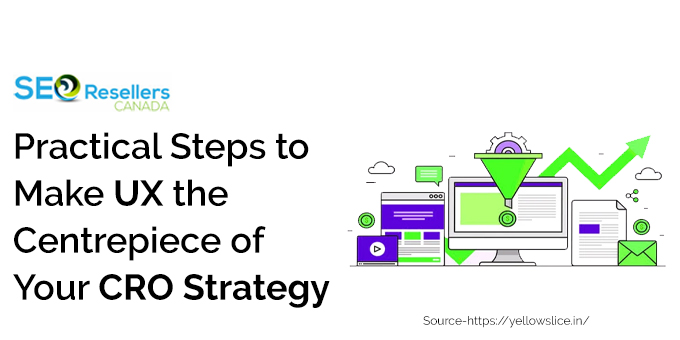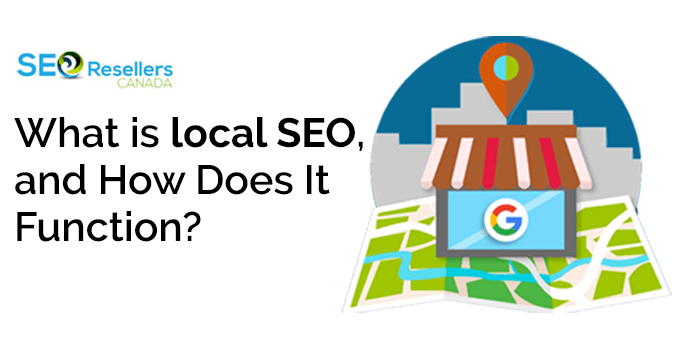Imagine this – you have invested hours crafting the ideal website. Your goods are wonderful, and your prices are competitive. In general, your branding is just right. So why, then, are visitors landing on and off without making a purchase? Does that ring a bell?
The solution to this enigma is knowing Conversion Rate Optimization (CRO). CRO used to be about button tweaking and A/B testing years ago. However, today’s online landscape requires more. The real game-changer? User experience!
Customer expectations have skyrocketed in 2025. People want websites that not only work well but also feel good to use. So, visitors naturally become customers when your site delivers a smooth and enjoyable experience.
Do you want to boost your site’s engaging and sales? In this blog, let us look at why UX has become the new driving force behind successful conversion strategies.
1- Understanding Conversion Rate Optimization (CRO)
CRO helps turn more website visitors into customers or leads. The goal is simple. You have to get people to take action, whether that is making a purchase or requesting more information.
1.1- Here Are Some Key Metrics You Need To Track
- Conversions: How many people completed your desired action
- Conversion Rate: The number of visitors who convert
- Other Important Numbers: Bounce rate (people leaving quickly), time spent on site, and cost to acquire each conversion
1.2- Traditional CRO Methods
Businesses usually use A/B testing (trying two different page versions) and improve landing pages. Some brands also refine their messaging and optimize buttons. Companies like Shopify boosted conversions by 30% just by improving their landing pages. Meanwhile, HubSpot is also getting more online customers by testing every button and headline.
1.3- Why These Methods Are Not Enough Anymore
These tactics still work. However, today’s users expect more. They want websites that load instantly and look great on phones. So, the old “tweak and test” approach needs to be combined with better overall user experiences. This will help you to keep up with modern expectations.
2- The Changing Digital Landscape: Why CRO Must Evolve

The digital marketplace has become more competitive in 2025. It requires businesses to adapt to new customer expectations. This is because users are demanding easy and personalized experiences across all devices and platforms.
Static conversion optimization tactics from the past no longer work in this dynamic environment. Modern consumers engage with brands through multiple touchpoints. These users will abandon slow-loading or confusing websites immediately. Research indicates that 53 percent of mobile users leave if a page requires more than three seconds to load.
So, companies must focus on understanding user behaviour to stay relevant. They also have to emphasize search intent and use advanced tools like AI SEO strategies. These technologies help predict customer needs and deliver relevant experiences in real time.
The most successful brands will be those that combine traditional conversion techniques with smart personalization and flawless user experiences across every digital channel.
3- Why User Experience (UX) is Critical for Conversions: How To Boost Website Visibility

User Experience means how easy and enjoyable your site is. This directly determines whether visitors become customers. Good UX removes frustration. It also makes the path to purchase a smoother experience. Here is how different UX elements impact your conversion rates
3.1- Easy Navigation = More Conversions
Are visitors not able to find what they need quickly on your site? They will leave. In fact, 61.5% of users abandon sites with confusing menus. Simple and logical navigation keeps people engaged and moving toward checkout.
3.2- Speed Matters More Than Ever
Slow websites are conversion killers. Every second of delay increases frustration and abandonment rates. Fast-loading pages keep visitors happy. As a result, they are more likely to complete purchases.
3.3- Clean Design Builds Trust
Professional designs with readable fonts and proper image descriptions make your site welcoming to all users. A good visual presentation makes your business appear more credible.
3.4- Clear Content Removes Doubt
Visitors should instantly know about the products or services you offer. They should also understand your brand’s motive. Confusing or wordy content creates hesitation. It is important that you create simple and benefit-focused messages. This will guide your users to convert.
3.5- Mobile-First is Non-Negotiable
Your sites must work perfectly on small screens. This is because a lot of people browse on phones. Buttons should be thumb-friendly. Even your text should be readable.
Here are some real success stories
- Airbnb made booking easier by reducing steps. This boosted conversions
- ASOS improved mobile checkout. This led to more completed purchases
- Derek Rose saw a 37% conversion increase just by optimizing popups and menus
The lesson? Small UX improvements usually deliver big conversion gains. Sales will also naturally increase when you remove friction points and make the user journey effortless.
4- Data-Driven CRO: Leveraging Analytics for UX Insights

Successful conversion rate optimization relies heavily on data. You need both numbers and user feedback to make smart decisions.
4.1- Web Analytics Platforms
Web analytics tools like Google Analytics show you important patterns. It helps you see where visitors leave your site and the actions they take. Heatmaps and session recordings let you see the way users interact with your pages.
4.2- User Testing and Feedback Loops
Watching real people use your site and collecting their thoughts helps you spot problems. It also helps you find ways to make things better.
4.3- Segmentation and Personalization
Breaking down your visitors into groups based on the way they behave and where they came from allows you to create more targeted improvements for different types of visitors.
For instance, you can check out Danish fashion company Rains. They used session recordings and heatmaps to find where users got stuck on their website. They then tested different solutions with A/B testing. It helped them see which changes actually worked. This approach increased their conversions by 10%.
These methods for improving websites based on real data are a key part of ongoing site improvement. Many businesses work with experts from an SEO agency or service. It helps them gather and make sense of this information. This helps them turn these ideas into practical website changes that get better results.
5- Personalization and Segmentation: Tailoring UX for Higher Conversions

Today’s customers expect websites to understand their needs. But how do brands accomplish this mind-reading task? The majority of them divide their audience into groups based on their behaviour. This helps them create more relevant experiences that drive conversions.
Simple personalization tactics make a big difference. You need to show different content to returning visitors versus new ones. You can also give special deals to customers who abandoned their carts.
It can help if you use AI driven SEO optimization to recommend products similar to the ones they have viewed before. You can even add the best AI chatbot 2025. This can guide visitors in real-time and answer their questions.
These personalized touches work! Companies using them see their sales jump by 19%. This is because visitors are more likely to buy something when they feel like the site “gets” them.
6- Search Experience Optimization (SXO): The Next Evolution

SXO represents the next step in digital marketing. It combines conversion optimization with seamless user experiences. You can think of it as perfecting every touchpoint from the moment someone searches to when they complete an action on your site.
This approach focuses on understanding what users want when they search and delivering content that matches perfectly. Their experience should feel effortless, whether they are on a phone or computer. Even users coming from a Google alternative search engine should find the items they need.
Great SXO also considers the emotional side. This includes building trust through clear information and reassuring design elements. For instance, when someone searches “how to generate leads for business,” your content should not only answer their question. It should also guide them naturally toward taking action.
SXO becomes crucial for staying competitive as search behaviors evolve. It is no longer just about ranking high. It is about creating search experiences that feel personalized and conversion-ready across every device and platform.
7- Practical Steps to Make UX the Centrepiece of Your CRO Strategy

It is important to follow these actionable steps to build a successful CRO strategy focused on user experience –
7.1- Conduct Comprehensive UX Audits
You can start by examining your website through multiple lenses. It can help if you use tools like Google Analytics. This will help you track user behaviour. You can also use heatmaps to visualize clicks and scroll patterns. Combine this with direct user testing. This means asking real people to complete tasks while observing where they struggle. This approach will reveal both obvious and subtle friction points hurting your conversions.
7.2- Prioritize High-Impact Changes
Not all fixes are equally valuable. You need to focus first on issues that improve user satisfaction and impact business goals. For example, are your checkout abandonment rates high? You need to simplify that process before tweaking less critical pages. It can help if you create a scoring system. This will help you evaluate which changes will deliver the biggest ROI based on potential conversion lift versus implementation effort.
7.3- Test Rigorously Before Full Implementation
Never assume a change will work – prove it. It is important that you run A/B tests comparing new versions against original pages. Meanwhile, you can use multivariate testing for complex changes. This will help you evaluate different element combinations.
7.4- Establish Continuous Improvement Cycles
CRO is not a one-time project. It is important that you set up regular review periods to analyse new user data. It will also help you identify emerging pain points and test additional optimizations. This ongoing process can result in greater improvements over time.
Is your business lacking internal resources for this? You can partner with specialized SEO outsourcing providers or digital marketing agencies. They have the expertise and skills to execute this process effectively.
8- Common Challenges and How to Overcome Them To Enhance Digital Footprint

Conversion optimization teams frequently encounter these key obstacles –
8.1- Balancing Business Goals with User Experience
The constant push for higher conversions can sometimes create a poor user experience if taken too far. For example, aggressive popups might increase sign-ups. But it can frustrate visitors. The solution? It is important that you test changes thoroughly. You also have to monitor both conversion metrics and user satisfaction scores. It can help if you look for win-win solutions that serve both business needs and customer happiness.
8.2- Cutting Through Data Overload
There are countless metrics available. So, teams usually struggle to focus. You can avoid this by identifying a few key performance indicators that directly tie to business outcomes. It can help if you set up clean dashboards that highlight these critical metrics. Also, schedule regular data review sessions. This will help you stay focused on the aspects that matter the most.
8.3- Resolving Conflicting Feedback
Different stakeholders usually have competing opinions about the changes. The loudest voice should not automatically win. Instead, you need to let data settle debates. It is important that you run controlled tests. This will help you see which approach performs better. When qualitative and quantitative data disagree, a good advice is to dig deeper to understand the “why” before making decisions.
The path forward is clear – let user behaviour guide your optimizations while keeping business objectives in sight. When in doubt, you can consult experts in SEO services to test your website elements! This is because real user data never lies.
9- To conclude
User experience has become the foundation of successful conversion strategies. Companies that focus on creating smooth and enjoyable experiences do not just see more conversions. They are able to build lasting customer relationships. This is because visitors are more likely to shop from your brand when they find your site easy to use and genuinely helpful.
With the digital world changing, you need to also change your approach. The thing that worked last year might not work today. That is why you need to hire experts in SEO friendly content writing to boost your site’s engagement. Also, conduct continuous testing and improvement.
It is important to make UX a central part of your conversion strategy. This way, you will stay ahead of competitors. You will also be able to create a website that not only converts visitors but keeps them coming back.















